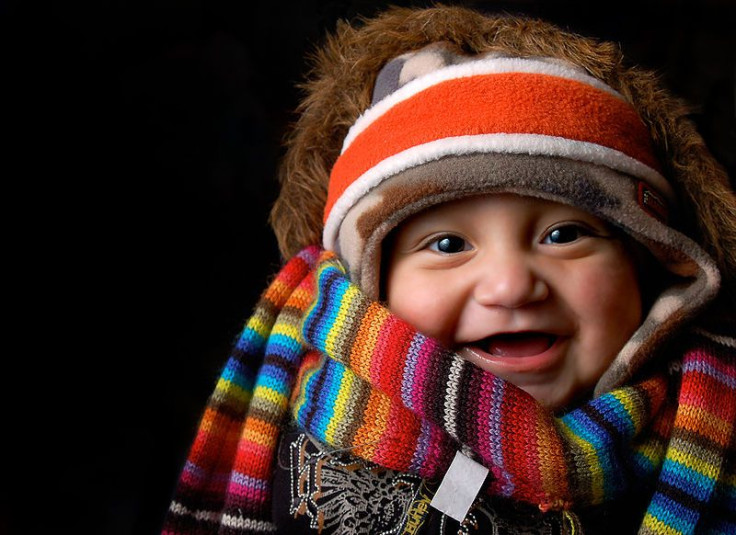From One Baby to Another: Infants Can Read Each Other's Emotions

While it may all sound like babble, screaming, and just plain baby talk to us, a new study finds that infants can recognize each other's emotions by five months of age.
"Newborns can't verbalize to their mom or dad that they are hungry or tired, so the first way they communicate is through affect or emotion," Ross Flom, a psychology professor at Brigham Young University, said in a press release. "Thus it is not surprising that in early development, infants learn to discriminate changes in affect."
Flom and his team of researchers wanted to see if infants could recognize these changes in affect, conveyed by other infants' vocalizations, and pair them with facial expressions. They already knew that at six months an infant could match emotions with familiar adults, and at seven months with almost any other adult.
With 40 infants, they put each in front of two monitors, with one showing an image of a happy, smiling baby, while the other one had a sad, frowning baby. When they played audio of a happy baby, the infants looked longer at the video of the baby with happy expressions. The infants responded conversely when sounds of a sad baby were played. What was interesting was that all sounds were from a third baby, and the sounds didn't correspond to the lip movements of the babies in either video — this shows their awareness of emotion.
"We found that five month old infants can match their peer's positive and negative vocalizations with the appropriate facial expression," Flom said. "This is the first study to show a matching ability with an infant this young. They are exposed to affect in a peer's voice and face which is likely more familiar to them because it's how they themselves convey or communicate positive and negative emotions."
The findings from this study come on the heels of other studies in which Flom found six-month-old infants were able to comprehend emotions from both dogs and monkeys.
In one study, he found that infants could match the sounds of angry snarls and friendly yaps from dogs, matching these sounds with their body language. In the other study, Flom wanted to see if a tenet of infant development called "perceptual narrowing" actually happened. Perceptual narrowing says that at around six months old, an infant's mind begins to narrow in a way that they start to focus only on the familiar nuances of everyday life. However, when they were shown monkey's faces for 20 seconds, and then shown another monkey with a different facial expression, they spent more time looking at the new monkey.
"These findings add to our understanding of early infant development by reiterating the fact that babies are highly sensitive to and comprehend some level of emotion," Flom said. "Babies learn more in their first two and a half years of life than they do the rest of their lifespan, making it critical to examine how and what young infants learn and how this helps them learn other things."
Source: Flom R, Bahrick L, Vaillant-Molina M. Young Infants Match Facial Expressions of Other Infants. Infancy. 2013.
Published by Medicaldaily.com



























